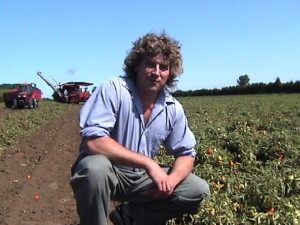I’m still somewhat bemused that anyone has no trouble contacting me – this time while goofing around in Hawaii – yet university admin types were baffled so much they fired me for bad attendance.
Excellence in education.
 Amy Rushlow of Yahoo! Health reports that a bacterial outbreak in apples has killed seven people and hospitalized 31, according to the Centers for Disease Control (CDC).
Amy Rushlow of Yahoo! Health reports that a bacterial outbreak in apples has killed seven people and hospitalized 31, according to the Centers for Disease Control (CDC).
The Food and Drug Administration (FDA) recently confirmed that strains of listeria bacteria were discovered at the Bidart Bros. apple-packing plant in California. A majority of the cases have been linked to prepackaged caramel apples. Last week, Bidart Bros. voluntarily recalled all Granny Smith and Gala apples following the results of the tests.
Apples are the second most popular fruit in America, according the Agricultural Marketing Resource Center. But apple contamination is actually rare because they have a hard surface, which prevents bacteria from entering the fruit, says Doug Powell, PhD, a former professor of food safety in the U.S. and Canada who publishes barfblog.com.
“Fresh fruits and vegetables are probably the biggest source of foodborne illness today in North America, and that’s because they’re fresh — we don’t cook them — so anything that comes into contact has the potential to contaminate,” Powell tells Yahoo Health.
Powell is especially careful with the following five fruits and vegetables, which have been linked to a significant number of foodborne illness outbreaks over the past years. (And no, apples didn’t make the list.)
1. Sprouts
This is the one food that Powell simply refuses to eat. “There are outbreaks all the time around the world.” You might recall the 2011 outbreak in Germany, which killed more than 50 people and sickened more than 4,000. In late 2014, more than 100 Americans became ill after eating sprouts tainted with E. coli.
Sprouts are particularly prone to bacteria because they germinate in a high-temperature, high-moisture environment — the same environment where germs thrive. “They’ve shown in many of these cases, it’s the seed that’s contaminated on the inside, so then when you get it germinated, you only need one cell and it’s going to grow,” he adds.
The CDC recommends that pregnant women, children, older adults, and people with weak immune systems avoid eating raw sprouts. Cooking sprouts destroys harmful bacteria.
Unlike honeydew melons or watermelon, cantaloupes have porous rinds that allow bacteria to enter the fruit. In addition, the fields where cantaloupes are grown often flood, Powell explains, “So they’re sitting in water, and that water may have come downstream from a livestock operation.”
3. Leafy greens
Bacteria becomes trapped on the inner leaves as the head is forming, Powell explains. Plus, leafy greens are especially difficult to wash effectively. Over the past several years in the U.S., bags of romaine lettuce, prepackaged salad mix, spinach, and spring mix have all been linked to E. coli outbreaks.
4. Tomatoes
There are several ways for germs to enter the fruit of the tomato, including via groundwater or through the water tomatoes are plunged into to give them a little shine, Powell says. “The dunk tank water has to be within five degrees of the interior of the tomato or else a vacuum is formed and water rushes in, so whatever is in dunk tank water is now inside of the tomato.” An easy fix is for tomato companies to monitor the dunk tank water, but unfortunately there isn’t a simple way for consumers to know if their grower does this.
5. Garnishes, such as green onions, cilantro, and parsley
Green onions and other herbs and vegetables used as garnishes are at high risk for outbreaks because we don’t cook them, Powell explains. He recommends leaving them off the plate if they’re simply for decoration.
Don’t let all of this scare you away from eating fresh fruits and vegetables, Powell stresses. While there is no one measure that will keep you completely safe, a few small steps can add up. For one, Powell himself shops for produce at the largest store he can find. “They have the resources to demand that their supply has to go through some basic food safety standards that they’re going to apply internally,” he says. He also recommends giving fresh produce a rinse, which removes surface debris and some (but not all) bacteria.
And while Powell doesn’t suggest always cooking fruits and vegetables to kill bacteria, since there are nutritional benefits to eating them raw, it’s a step you can take if you’re especially concerned. The FDA website offers additional everyday food safety tips.




















